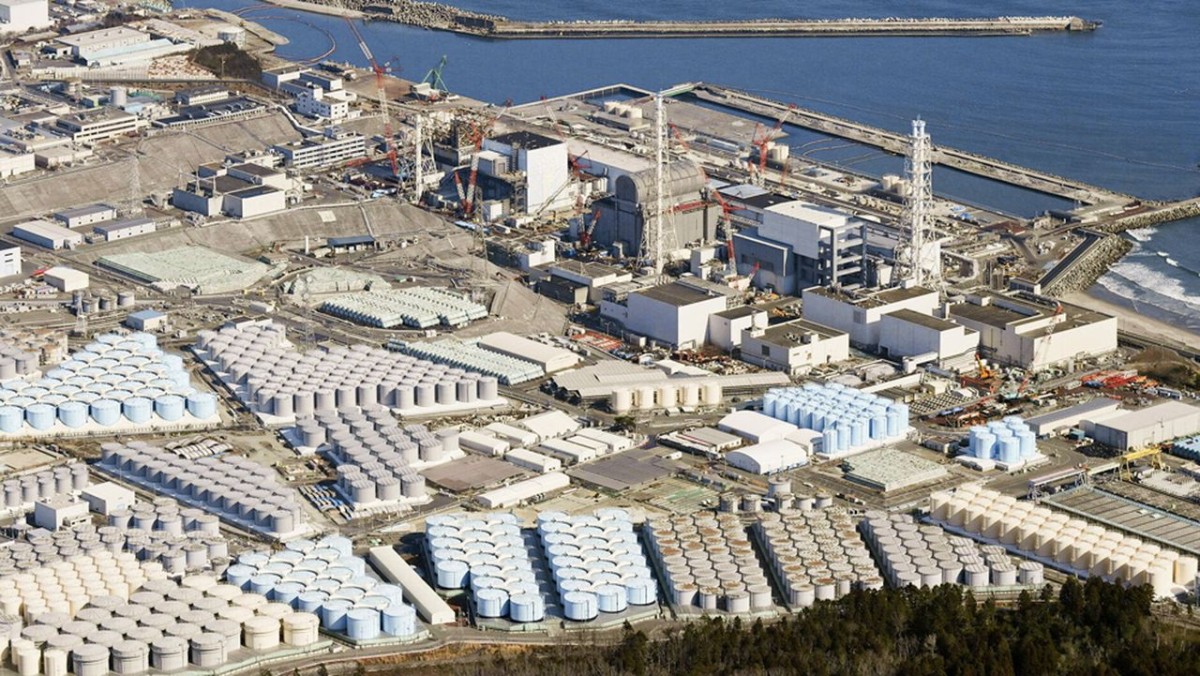 In their latest annual strategic progress report, experts from Japan’s Nuclear Damage Compensation and Decommissioning Facilitation Corporation (NDF – part of Tokyo Electric Power Corporation – Tepco) proposed that a massive concrete reservoir should be built and filled with water to completely enclose one of the Fukushima Daiichi reactor buildings.
In their latest annual strategic progress report, experts from Japan’s Nuclear Damage Compensation and Decommissioning Facilitation Corporation (NDF – part of Tokyo Electric Power Corporation – Tepco) proposed that a massive concrete reservoir should be built and filled with water to completely enclose one of the Fukushima Daiichi reactor buildings.
The water would act as a shield to prevent radiation from escaping into the environment and give engineers more room to work with heavy equipment to dismantle and remove the outer shell of the building. This would then allow specialists to use robots to more thoroughly study the state of the reactor, as well as the fuel that has leaked and accumulated in the basement of the building. Details of plans were reported by the NHK television channel.
In 2011 the Fukushima Daiichi NPP suffered core melt-downs in three of its four reactors in the wake of an earthquake and trunami that damaged the facility. In total, according to Tepco estimates, about 880 tons of radioactive waste have accumulated in the three reactors.
Valery Menshchikov, a member of the public council of Rosatom, the council of the Centre for Environmental Policy of Russia told Strana Rosatom that the proposed project would be hugely expensive. “In the information that the Japanese posted in the media, there are no clarifications about how much it will cost. From a physics point of view, as well as from an engineering point of view, this is all possible. But it is a gigantic job, and, in my opinion, it will require a comparable large budget.”
While the technology proposed by Tepco may be effective, it is extremely expensive, he stressed. To date, the estimated cost of liquidation work at Fukushima is $57.5 billion. To implement a new project, it will be necessary to create new technologies and carry out complex engineering calculations. Such a task may be too much for Japan’s Atomic Energy Agency, he added.
“Doing all this work, even just getting close to the radioactive melt, will not be easy. In my opinion, it is necessary to announce an international tender under the auspices of the International Atomic Energy Agency (IAEA). An international agency could initiate an exchange of ideas among scientists and specialists from those countries where work on the peaceful use of atomic energy has long been under way. But the fact is that the Japanese are very reluctant to cooperate in this area,” he said.
He added that this attitude was especially pronounced after the accident at Fukushima. Then the station was visited by a special commission of the IAEA, which, at the insistence of Japan, did not include Russian specialists. Rescuers from a special detachment of the Russian Ministry of Emergency Situations were also not allowed assist, he said.
“Japan is a technologically advanced country. But Russia, France, and the United States have vast experience in preventing the consequences of accidents at nuclear facilities, and I am sure that specialists from these countries should participate in the competition for the implementation of this very complex project. Although, I'm afraid, in today's conditions, our proposals will not be taken into account,” he added
The removal of molten fuel was supposed to begin this year at the the unit 2 reactor using robotic mechanisms. However, work was delayed by 12-18 months. The complete dismantling of the NPP is planned to be completed around 2050.
“Another legitimate question is what to do with the water that will flood the zone with the melted fuel? This is a very dangerous liquid radioactive waste. This question is up in the air today,” he noted.
Image: Aerial view of the Fukushima Daiichi nuclear power plant (courtesy of Tepco)






